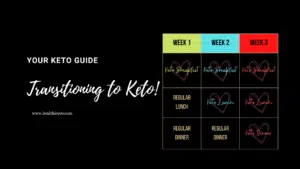Intermittent fasting is a dietary pattern that involves alternating periods of fasting and eating. Rather than focusing on what foods to eat, it focuses on when to eat them. The concept behind intermittent fasting is to create specific windows of time for eating and fasting, which can potentially have various health benefits.
Types of Intermittent Fasting
Following are the types of intermittent fasting:
Time-Restricted Eating
One popular form of intermittent fasting is time-restricted eating (TRE). With TRE, you limit your daily eating window to a specific number of hours, typically between 8 and 10 hours. This means you only consume food during that designated period while fasting for the remaining hours of the day.
Alternate Day Fasting
Another approach is alternate-day fasting, where you alternate between days of regular eating and days of significant calorie restriction or fasting. On fasting days, calorie intake is limited to a small fraction of your usual intake or even zero calories.
Modified Fasting
Some individuals choose to modify their fasting days by consuming a reduced amount of calories, typically around 25% of their regular intake. This approach allows for some food intake while still experiencing the benefits of fasting.
Health Benefits of Intermittent Fasting
The various health benefits of intermittent fasting are:
1. Weight Loss
By restricting the eating window or reducing calorie intake on fasting days, intermittent fasting can create a calorie deficit, leading to weight loss. It may also help regulate hormones involved in appetite control.
2. Improve Insulin Sensitivity
Intermittent fasting has been shown to improve insulin sensitivity, which can help regulate blood sugar levels and reduce the risk of type 2 diabetes.
3. Enhance Cellular Repair
During fasting periods, the body initiates cellular repair processes, including autophagy, where damaged cells are broken down and recycled. This can contribute to better overall cellular health.
4. Benefits the Heart
Some studies suggest that intermittent fasting may improve heart health markers such as blood pressure, cholesterol levels, and inflammation.
5. Improve Cognitive Functions
There is emerging research indicating that intermittent fasting might have positive effects on brain health, including improved cognitive function and a reduced risk of neurodegenerative diseases.
While intermittent fasting shows promise, it is important to note that it may not be suitable for everyone. Individuals with certain medical conditions, pregnant or breastfeeding women, and those with a history of disordered eating should consult with a healthcare professional before starting any fasting regimen.
Remember, maintaining a balanced and nutritious diet is crucial for overall health. Intermittent fasting should be approached with careful consideration and personalized guidance to ensure it aligns with individual needs and goals.
10 Tips for incorporating Intermittent Fasting into your routine
1. Choose the right method
There are different approaches to intermittent fasting, so it’s important to select a method that suits your lifestyle and preferences. Time-restricted eating (TRE), where you limit your daily eating window, is a popular and practical option for many people.
2. Start gradually
If you’re new to intermittent fasting, it can be helpful to ease into it. Begin by gradually increasing the fasting window over a few days or weeks. For example, start with a 12-hour fasting window and slowly extend it to 14 or 16 hours.
3. Find your optimal eating window
Experiment with different eating windows to find what works best for you. Some people prefer an early eating window, while others prefer a later one. Listen to your body and choose a time that aligns with your natural hunger cues and schedule.
4. Stay hydrated
During fasting periods, it’s essential to stay hydrated. Drink plenty of water, herbal tea, or other non-caloric beverages to keep your body hydrated and help curb hunger.
5. Focus on nutrient-dense foods
When you break your fast, prioritize nutrient-dense foods to nourish your body. Include a balance of lean proteins, whole grains, fruits, vegetables, and healthy fats in your meals to ensure you’re getting essential nutrients.
6. Be mindful of portion sizes
While intermittent fasting is not necessarily about calorie counting, it’s still important to be mindful of portion sizes. Practice portion control and listen to your body’s hunger and fullness signals to avoid overeating.
7. Listen to your body
Pay attention to how your body responds to intermittent fasting. If you experience negative effects or extreme hunger, it may be a sign that the fasting window is too long or not suitable for you. Adjust your approach accordingly and consult with a healthcare professional if needed.
8. Maintain a consistent schedule
Try to establish a consistent fasting and eating schedule. Regularity can help your body adjust to the fasting periods more easily and make it a sustainable part of your routine.
9. Be patient and flexible
Intermittent fasting is not a quick fix and results may take time. Be patient with yourself and allow your body to adapt. It’s also important to be flexible and make adjustments as needed to accommodate social events, travel, or other circumstances.
10. Seek professional guidance
If you have any underlying health conditions or concerns, it’s always a good idea to consult with a healthcare professional or registered dietitian before starting intermittent fasting. They can provide personalized guidance and ensure it aligns with your individual needs.
Remember, intermittent fasting is not suitable for everyone, and what works for one person may not work for another. It’s essential to listen to your body, prioritize your overall well-being, and make choices that support your health goals. Intermittent fasting is not so much a specific diet but rather an eating pattern that cycles between periods of fasting and eating.
Popular Approaches to Intermittent Fasting that one can consider
16:8 Method
This method involves fasting for 16 hours each day and restricting your eating window to 8 hours. Typically, this means skipping breakfast and having your first meal around noon, then finishing dinner by 8 pm.
5:2 Diet
With the 5:2 diet, you eat normally for five days of the week and restrict your calorie intake to 500-600 calories for women or 600-800 calories for men on the remaining two non-consecutive days. These fasting days should not be consecutive but spread out in the week.
Alternate Day Fasting
This method involves alternating between fasting days, where you significantly reduce your calorie intake or consume no calories at all, and regular eating days where you eat normally.
Eat-Stop-Eat
This approach involves fasting for 24 hours once or twice a week. For example, you may choose to eat dinner one day and then not eat until dinner the next day.
Warrior Diet
The Warrior Diet involves fasting during the day and having one large meal at night. Throughout the day, you can consume small amounts of fruits, vegetables, and protein-rich foods.
Remember, while intermittent fasting can be an effective tool for weight management and other health benefits, it’s essential to focus on overall nutrition and make healthy food choices during your eating periods. Include a balance of whole grains, lean proteins, fruits, vegetables, and healthy fats in your meals to ensure you’re meeting your nutrient needs.
It’s also important to note that intermittent fasting may not be suitable for everyone, especially those with certain medical conditions or who are pregnant or breastfeeding. If you have any concerns or specific health conditions, it’s best to consult with a healthcare professional or registered dietitian before starting any new eating pattern.
Tips for Meal Planning While on Intermittent Fasting
Meal planning during intermittent fasting can play a crucial role in ensuring you get the nutrients your body needs while supporting your health and weight loss goals.
- Plan your meals to ensure you’re including a variety of nutrients.
- Avoid overly processed foods, which can be high in calories but low in nutrition.
- If your goal is weight loss, be mindful of calorie-dense foods, even healthy ones like nuts and oils; moderation is key.
- Consider using smaller plates or bowls to help manage portion sizes visually.
Foods to Include
- Protein-rich foods to maintain muscle mass and keep you feeling full.
- Fiber-rich foods such as vegetables, fruits, legumes, and whole grains help with satiety and maintain digestive health.
- Healthy fats from sources like olive oil, avocados, and nuts, which can help keep you satisfied and support overall health.
- Hydration is key, so plenty of water, herbal teas, and other non-caloric beverages.
- Fermented foods like yogurt, kefir, and sauerkraut can support gut health.
Portion Sizes
Vegetables
Aim for a variety of colors (greens, reds, oranges) and types (leafy greens, cruciferous, root vegetables). A portion might be 1-2 cups of raw leafy greens or 1/2 cup of cooked vegetables.
Fruits
Fresh, frozen, or dried without added sugars are great. A portion is typically one medium piece of fruit or 1/2 cup of fresh or frozen fruit.
Proteins
Include lean meats, poultry, fish, eggs, dairy, beans, legumes, and tofu. A portion size for meat is about the size of a deck of cards (3-4 ounces), while for plant-based proteins, a portion might be 1/2 cup of legumes.
Whole Grains
Foods like brown rice, quinoa, barley, oats, and whole-grain breads should be integrated. A portion is usually 1/2 cup cooked grains or 1 slice of whole-grain bread.
Healthy Fats
Include sources like avocados, nuts, seeds, and olive oil. Because fats are calorie-dense, a portion size might be 1 tablespoon of oil or 2 tablespoons of nuts or seeds.
Conclusion
In conclusion, intermittent fasting has gained popularity as an effective approach for promoting both health and weight loss. The various methods, such as the 16/8 protocol, 5:2 diet, Eat-Stop-Eat, and alternate-day fasting, offer flexibility for individuals to choose a plan that fits their lifestyle. The key to successful intermittent fasting is finding an approach that works for you and aligns with your lifestyle and goals. It’s crucial to prioritize overall health and well-being rather than focusing solely on weight loss. Additionally, consulting with a healthcare professional or nutrition expert can provide personalized advice based on your individual needs and goals.
Finally, intermittent fasting is a tool that can be incorporated into a holistic approach to health. It’s not a quick fix, and success lies in a combination of healthy eating, regular physical activity, and lifestyle habits. As with any dietary strategy, individual responses may vary, and it’s important to consult a healthcare professional. Whether you’re drawn to intermittent fasting for its weight loss benefits, metabolic advantages, or other potential health perks, doing so in a thoughtful and informed manner can contribute to a positive and sustainable lifestyle change.

Sneha Manesh
Related Posts

5:2 Fasting, Dry Fasting vs Wet Fasting – To Fast Or Not To Fast



Transition to a Ketogenic Diet & Get Fat Adapted – A Step-by-Step Guide



